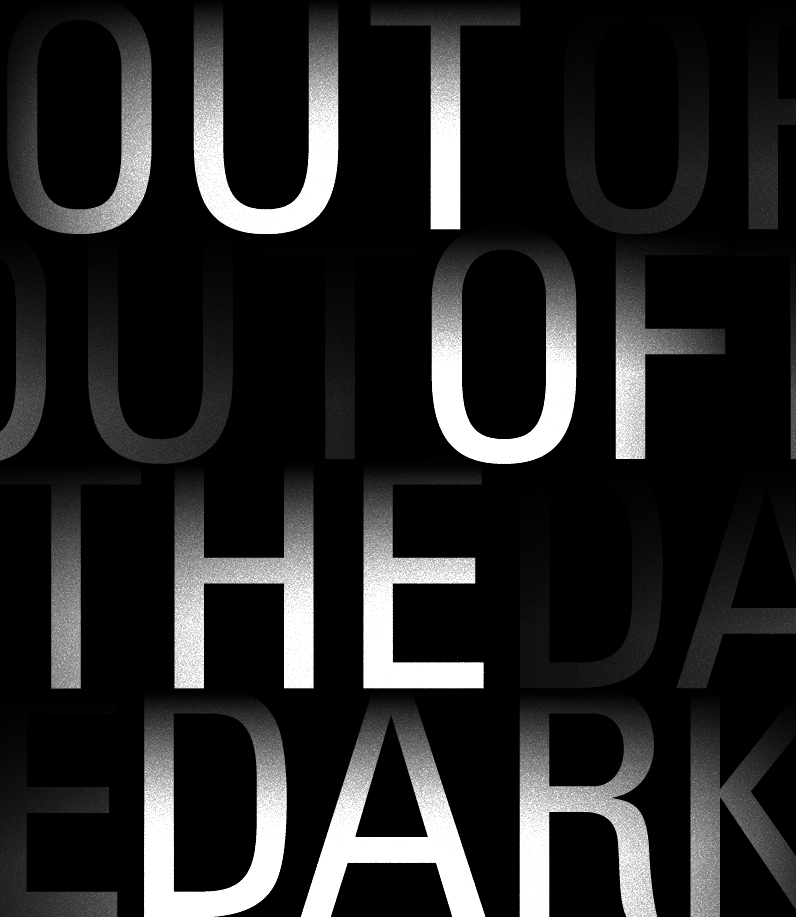OUT OF THE DARK
30 Years of the LÜTZE Collection at Galerie Stadt Sindelfingen
14.03.20-30.08.20
DIGITAL EXHIBITION: Out of the Dark
The exhibition sees the clash of two age-old antagonists: darkness and light, with the presentation divided into two sections: Hello darkness, my old friend and Out of the dark, into the light!. Based on works from the LÜTZE collection, Dan Flavin’s monument for V. Tatlin, a loan from the Froehlich Collection in Stuttgart, and two recent contemporary artists, Anna-Maria Bogner and Benjamin Hönsch, the sections demonstrate the myriad facets, contradictions, but also meeting points of these two opposites. Combining older and recent positions, the show pursues one of the gallery’s core curatorial goals, presenting works from the collection to the public on the institution’s thirtieth anniversary. The exhibition also takes stock of the gallery’s own holdings, panning out new perspectives by recombining and rearranging the works.
Hello darkness, my old friend
Darkness moves people. Often we perceive it as a threat, as it limits or even robs us of sight. We feel the fear of facing nothingness. However, the meanings attributed to darkness are rather more multifaceted. In Christian religion, for example, darkness stands in contrast to enlightenment, attaining knowledge. Night is regarded as a time of rest and dreaming and thus as a playground for the imagination. These different semantic layers of darkness also feature in works in the LÜTZE Collection: peaceful or romantic nocturnes; sometimes ominous landscapes; images profoundly influenced by the traumatic experiences of the two world wars; works that deal with death; or abstract pieces that use darkness for its intense, even spiritual effect. Arranged by theme, in Hello darkness, my old friend these positions attempt to approach the complexity of darkness, thus exploring a cultural phenomenon that is part of our existence.
Out of the dark, into the light!
The colour white has many different cultural associations. In western Europe, white is identified with purity, innocence and renewal. In African countries, in contrast, it stands for death and in China for age, autumn and deceit. Neurologically, it stands for the perception of light. Fear of the blank (i.e. white) page and writer’s block is a fixed expression in literature and can also be applied to the empty canvas. In the Renaissance and classicism, the perceived white of ancient sculptures was an expression of an idealistic transfiguration of a past that never actually existed.
Working on a light ground and patches of white colour with minimalist forms allowed avant-garde artists in the early 20th century to set themselves apart from the gravity of 19th century art, symbolising their departure into a new age. In post-war art, the ZERO artist group took this departure one step further. Going back to the collecting activity of Diethelm Lütze (1931–2014) and housed at the Galerie Stadt Sindelfingen since 1990, the collection not only features ZERO artists but also a host of other works from 1960 to the present that combine the central use of white and formal minimalism. An emphasis is on exponents of concrete art from the south of Germany. The exhibition embraces the period up to the present, showing how this tradition lives on today in painting, sculpture and works on paper. The artist Anna-Maria Bogner is developing a work specially for the show in Sindelfingen, thus forging a link to the works of the LÜTZE collection.
Curated by Madeleine Frey, Sebastian Schmitt and Moritz Schwörer
Artists (selection)
Anna-Maria Bogner (* 1984 in Tirol; lives in Vienna and Düsseldorf), Andreas Bindl (* 1928 in Grünthal; † 2010 in Faistenhaar), Eugen Bracht (* 1842 Morges, Switzerland; † November 15, 1921 in Darmstadt), Rupprecht Geiger (* 1908 Munich; † 2009 ibid), Hugo von Habermann (* 1849 in Dillingen; † 1929 in Munich), Marta Hoepffner (* 1912 in Pirmasens; † 2000 in Lindenberg), Oskar Holweck (* 1924 in St. Ingbert, Saarland; † 2007 ibid), Werner Höll (* 1898 in Freiburg i.Br.; † 1984 in Reutlingen), Benjamin Hönsch (* 1990 in Leipzig; lives in Stuttgart and Leipzig), Gustav Kampmann (* 1859 in Boppard; † 1917 in Bad Godesberg), Hans Molfenter (* 1884 in Ulm; † 1979 in Stuttgart), Ben Muthofer (* 1937 in Oppeln; † 2020 in Ingolstadt), Steffen Osvath (1978 in Aalen; lives in Stuttgart), Gustav Schönleber (* 1851 in Bietigheim; † 1917 in Karlsruhe), Franz von Stuck (* 1863 in Tettenweis; † 1928 in Munich), Elfriede Weidenhaus (* 1931 in Berlin; lives in Erkenbrechtsweiler), Fritz Winter (* 1905 in Altenbögge / Westf .; † 1976 in Herrsching am Ammersee), Klaus Staudt (* 1932 in Otterndorf; lives in Frankfurt am Main), Hermann de Vries (* 1931 in Alkmaar; lives in Knetzgau), Gerhard Wittner (* 1926 in Heidelberg; † 1998 in Frankfurt a. M.)



